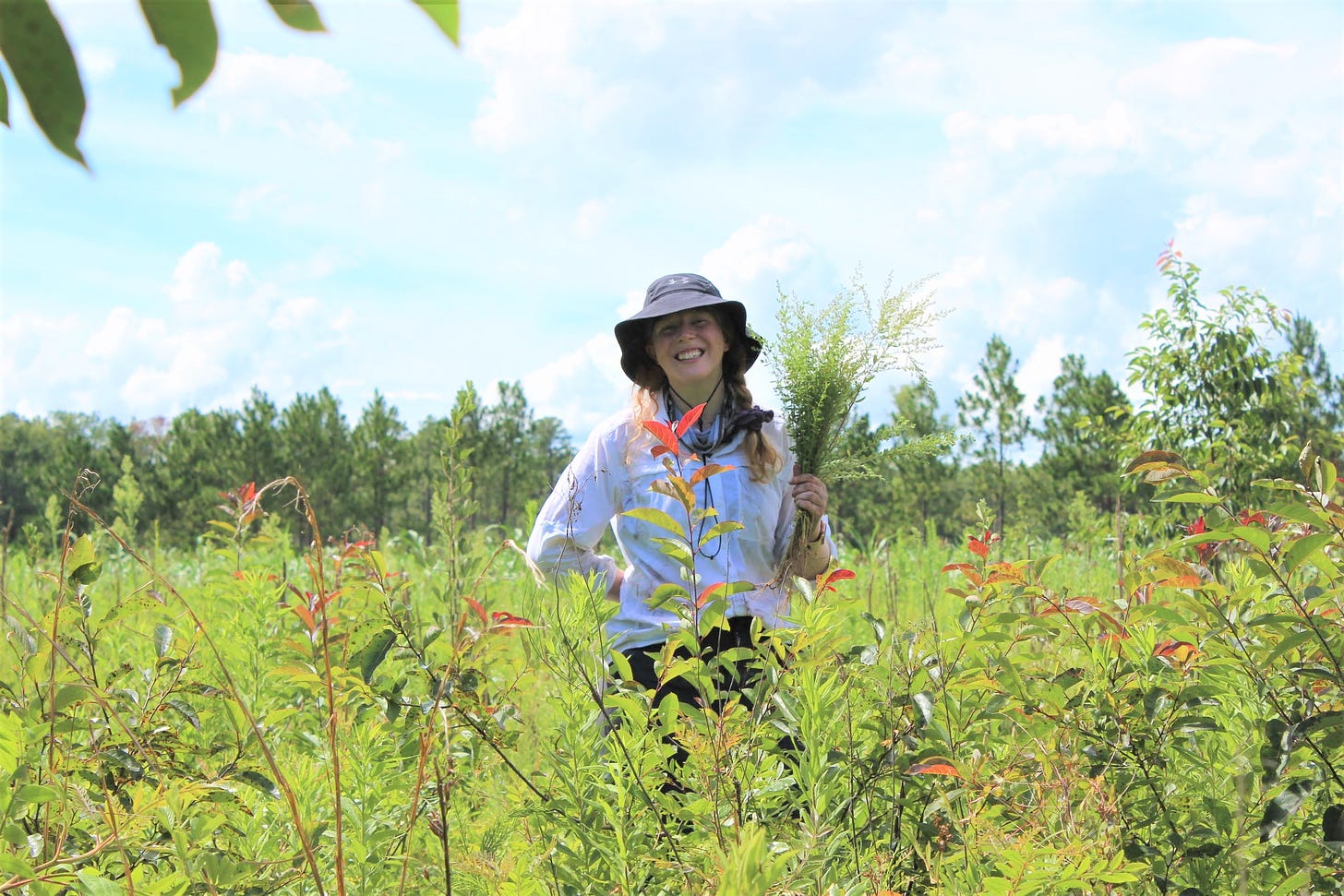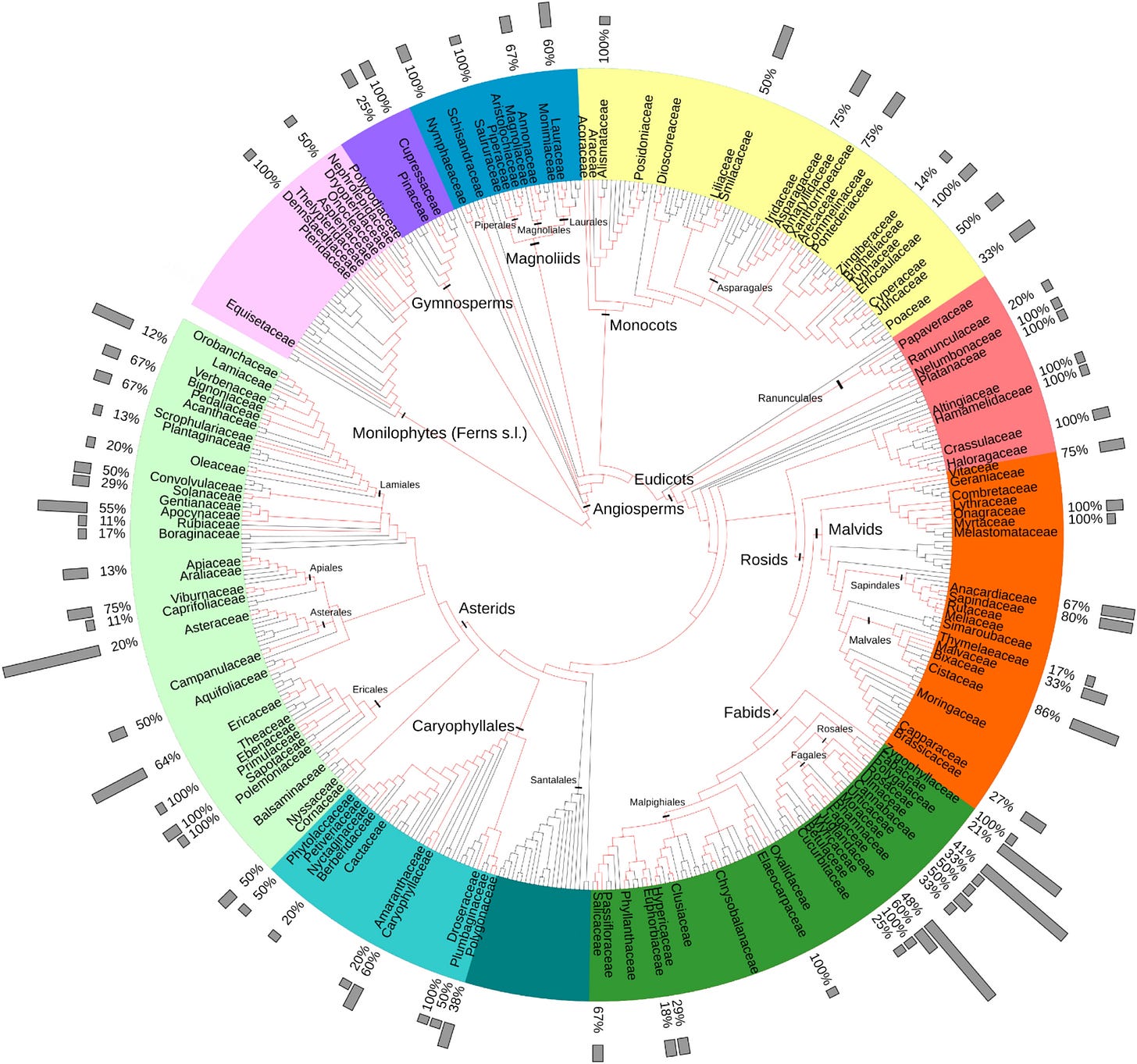Behind the paper: New research finds two wild plants inhibit COVID-19 virus
I take readers behind the paper to learn more about a recently published study from my lab. We tested more than 1,800 extracts of medicinal plants and found two plants with promising activity.

When COVID-19 hit the US in 2020, like most university research labs across the country, the Quave Research Group had to close operations until we could safely return. While working from home, we brainstormed for ways that we could help in the fight against this horrific disease that had already begun to claim the lives of some of our close friends and family. We could have never predicted that within the first few years of the pandemic, more than 6.8 million people would die worldwide.

What could we do?
We had no expertise in antiviral studies. Our research group's strength is in searching for new medicinal plant molecules in the fight against drug-resistant bacterial and fungal infections. Viral infections were another ballgame, and we weren't sure where to start. So, we applied ourselves to learning as much as we could, as quickly as we could. We read the scientific literature on the virus as it began to emerge. We itemized our assets and looked for new tools we could deploy in searching for natural compounds to fight SARS-CoV-2, the virus responsible for COVID-19.
Itemizing assets and challenges
We had three major assets:
The Quave Natural Products Library (QNPL): Our group has conducted field studies in global terrestrial biodiversity hotspots, collecting a targeted selection of plant and fungal species commonly used in traditional medicine for their health benefits. These species are particularly valued for their medicinal properties, including their use in treating infectious and inflammatory diseases. This is a one-of-a-kind chemical library composed of millions of molecules found in more than 2,500 extracts from plants and fungi.
Medium throughput robotics system: Our robotics platform allows us to test hundreds of samples simultaneously by dispensing tiny amounts of the drug solution (less than the size of a raindrop) into plastic dishes with many small test tubes.
Expertise in pharmacology, molecular biology, and natural products chemistry: Our most valuable asset was not simply our collection of natural molecules or fancy robots but rather the team itself! This project required the botanists, chemists, microbiologists, and pharmacologists on our team to work closely together as we forged a path forward.
How the QNPL is made: After identifying the plants and pressing them to make voucher specimens for deposit in the Emory Herbarium, we take bags of dry leaves, bark, flowers, or fruit to the chemistry lab and grind them into a powder. Much like making a cup of coffee, by soaking the ground plant materials in hot water or alcohol, we pull the plant's chemicals out of the tissue and into the liquid. That liquid contains not one but thousands of unique molecules from the plant. We evaporate the liquid and store the dry powder in the freezer until ready for testing. This is how the QNPL is made.
We were missing two critical assets:
Biosafety level 3 laboratory: Our lab is classified as a BSL2 (biosafety level 2) facility. Perfect for testing multidrug-resistant bacteria and human cells, but not equipped for infectious agents that spread by air.
A screening tool: We needed a molecular biology tool that would allow us to safely test thousands of extracts in a BSL2 lab with non-infectious parts of the virus before we sent off top hits to a collaborator with a BSL3 lab to work with the whole, infectious virus.
How we moved forward
A few key things lined up:
Tools to test the binding of the viral spike proteins to human cell receptors became available for purchase on the market. The test worked like this: if the spike and human cell receptor linked up, a fluorescent light would be released. If they didn't link up, we'd see no light. A big problem, though: the supplies cost thousands of dollars for tiny vials of it, and to test the QNPL, we could anticipate supply expenses greater than $200k.
We identified a collaborator at Emory—Dr. Raymond Schinazi—a world renowned scientist whose discoveries of FDA-approved drugs for HIV, HBV, and HCV viral infections have saved millions of lives. Dr. Schinazi’s team could take the top hits identified by my research group that next step forward by testing with infectious virus in a higher biosafety level lab.
Funding success! After a mad dash of submitting a flurry of grant proposals, one finally came through from a private foundation. We were off to the races.
The science behind the idea
Watch this video demonstrating how the viral spike protein engages with the human ACE-2 receptor, allowing the virus to enter the cell. This is the process we were seeking to disrupt with molecules in our chemical library.
Highlights from our findings

This study is the first extensive investigation of botanical ingredients used in traditional food and medicine systems for their efficacy as viral entry inhibitors for SARS-CoV-2 since the virus emerged in Wuhan, Hubei Province, China, in late 2019. Major highlights include:
We tested 1867 extracts total from the QNPL derived from 660 species.
We identified three extracts with potent activity in our Spike-ACE2 model that worked in four virus variants.
Two of these extracts demonstrated activity in studies on the infectious virus: flowers of the tall goldenrod and rhizomes of the eagle fern.
Next steps
We are making substantial headway in isolating and identifying the molecules responsible for the observed activity reported in our study. We will be working with our collaborators to test these with infection models. We hope to submit those new findings for scientific review and publication later this year.
What this means for you
First, it is essential to note that all of these tests reported in the present study were performed in a test tube—not in an animal or a human. We have no idea yet whether they will work in humans. We also recommend against making extracts of these plants on your own for consumption. The active molecules are present in tiny quantities in the plants, and the eagle fern can be toxic to humans if not prepared correctly.
Rigorous research takes time, intense dedication of students and research scholars, and stable funding. If you'd like to support more work like this, you can make a tax-deductible donation to our lab. All funds go directly to supporting the costs of research supplies, equipment, and salaries for our research team.
Want to learn more about this project?
Read the press release.
Read the scientific article.
Yours in health, Dr. Quave
Nature’s Pharmacy is written by Cassandra L. Quave, Ph.D.—a disabled writer, speaker, podcast host, professor, wife, mother, explorer, and ethnobotanist. Dr. Quave is Associate Professor of Dermatology and Human Health at Emory University School of Medicine. She has written about her work as a scientist in The Plant Hunter: A Scientist’s Quest for Nature’s Next Medicines (Viking/Penguin 2021). During the day, she teaches college courses and leads a large group of talented research scientists studying medicinal plants in the search for new life-saving drugs from nature. In her spare time she hosts the Foodie Pharmacology podcast and writes this newsletter. Her main goal is to share the incredible science behind the medicines found in nature. This newsletter is only possible through the generous support of fellow Nature’s Pharmacy community members. To support this effort and join the community, subscribe below.





So cool to read about how your team goes about making these discoveries - thanks so much for sharing! I'll be excitedly tracking your progress!